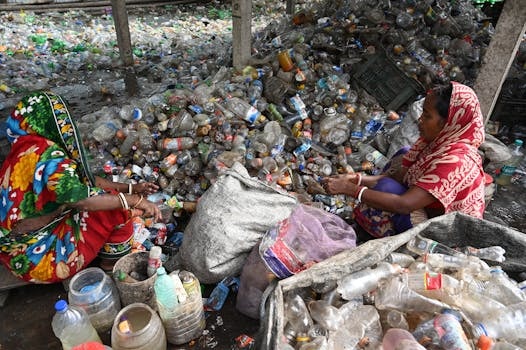The Circular Economy: Shopping with Reuse and Recycling in Mind
If there’s one thing we can’t escape in today’s world, it’s shopping. We constantly buy new clothes, electronics, and other items to keep up with the latest trends and technologies. However, this consumer lifestyle is not only unsustainable but also damaging to our planet. The good news is that there’s a solution – the circular economy. By shifting our mindset and incorporating reuse and recycling into our shopping habits, we can all play a role in creating a more sustainable future for generations to come.
The Concept of the Circular Economy
The term “circular economy” refers to an economic system that prioritizes the continual use of resources rather than the traditional linear model of take-make-waste. It aims to keep items and materials in use for as long as possible through reuse, repair, and recycling. This approach is in stark contrast to the current system, where resources are extracted, transformed into products, and eventually thrown away – resulting in waste and pollution that harm the environment.
The Environmental Impact of Traditional Shopping Habits
The traditional linear model of shopping has detrimental effects on our planet. It relies heavily on the extraction of raw materials and production processes that generate significant amounts of greenhouse gas emissions. As a result, this contributes to climate change, depletion of natural resources, and pollution of land, water, and air.
For instance, the fashion industry is a significant contributor to environmental degradation. Fast fashion, where clothes are made cheaply and quickly to meet the constantly changing trend cycle, has led to clothes being worn fewer times before being discarded. It’s estimated that the fashion industry produces about 10% of global carbon emissions and is responsible for 20% of industrial water pollution globally.
How Shopping with Reuse and Recycling in Mind Can Help
Choosing to shop with a circular economy mindset can help reduce the impact of consumerism on the environment. By embracing reuse and recycling, we can extend the lifespan of products and materials, reduce the need for new resources, and decrease the amount of waste sent to landfills.
Embracing Reuse
Reusing means giving an item a new life by using it again for the same purpose or a different one. There are many ways to incorporate reuse into our shopping habits, such as buying second-hand products, borrowing or swapping items with friends and family, or repurposing old clothes and furniture. This not only reduces the need to produce new items but also saves money and reduces waste.
Innovative companies are also embracing the concept of reuse. For instance, some fashion brands are incorporating rental or subscription models, allowing customers to rent clothes instead of buying them. This way, customers can enjoy the latest trends without contributing to the strain on the environment.
Promoting Recycling
Recycling is the process of turning waste into new products. It’s an essential element of the circular economy as it reduces the need for raw materials and keeps items out of landfills. As consumers, we can promote recycling by choosing products made from recycled materials and making sure to recycle items correctly.
However, to truly make a significant impact, it’s essential for companies to embrace recycling as well. This can be achieved by implementing product take-back programs, using recycled materials in their production processes, and designing products that are easier to recycle.
Challenges and Solutions
Implementing a circular economy approach does come with its own set of challenges. For one, transitioning from a linear system to a circular one requires a significant shift in mindset and behavior change from both consumers and businesses. Additionally, there are also infrastructural and technological limitations that may hinder the adoption of circular practices.
However, despite these challenges, there are still solutions that can help us move closer to a circular economy. Governments can introduce policies and regulations that support sustainable practices, and companies can invest in research and development to improve recycling infrastructure and develop more circular products.
Conclusion
When we shop, it’s essential to keep the circular economy in mind. By adopting a circular mindset, we can reduce our environmental impact, support sustainable practices, and contribute to a better future for our planet. So next time you’re about to make a purchase, think about how you can choose products that are reusable or recycled – because every small step counts towards a greener world.






